
COACHING PLAYERS.
DEVELOPING PEOPLE.
We develop players to become successful, confident and complete both on and off
the pitch. Players deserve more than drills and discipline. They deserve real 1-to-1 mentorship, psychological support and an experience that makes them feel like anything is possible — in their game and in their lives.
“Simon Clifford is quite simply the best one on one coach that I have seen at work, in any sport, in any country in the world”
— Sir Clive Woodward
2003 Rugby World Cup winning coach, Southampton FC Performance Director 2005-06, Dir. of Elite Performance (British Olympic Assoc) 2006-12,

ABOUT OUR
PROGRAMME.
Integer Football is a tailored 1-to-1 programme created by Simon Clifford, a pioneering coach who has helped some of the best players in the world reach new levels in performance and personal wellbeing.
Having introduced the revolutionary futsal and soccer school system to British coaching in the 90s, he is changing the game again.
Integer Football is an holistic, individualised and bespoke football training programme for life both on and off the pitch. We cover everything from elite skills, strength, conditioning and nutrition, to goal setting, confidence and mindfulness. Combining 1-to-1 weekly sessions with daily contact, we ensure that young people have everything they need to Keep Moving Forward.
Read more about our legacy here.
For every player,
not just aspiring pros.
In just a few years, Integer Football has helped professionals
Archie Gray, Will Hugill, Harry Leonard, Kian Spence,
Ryan Edmondson, George Horbury and Harry Gray become confident, inspiring players. If you want to elevate your game and see just how far you can go, our 1-to-1 coaching can help you.
Our programme, however, is for everyone, not just exclusively for those at the highest levels of the game. Many of our members enjoy the game recreationally, benefitting every day from increased self-esteem, motivation, empathy and focus, along with newfound awareness of their bodies, nutrition and mental wellbeing.
Discovering the player, and the person, they can become is an exciting journey for young people, parents, and their mentors.
Welcome to Integer Football. Let’s set their future in motion.
Archie Gray (pictured) has been training with Simon Clifford and in his soccer schools for most of his life, and been involved with Integer Football since around the age of 8.
Archie was part of Simon’s Socatots scheme from the ages of one to four - this was the first pre-school football training programme of it’s kind in the world. Gray then moved on to Brazilian Soccer Schools in Harrogate, working through all the stages of BSS.
In his ten years at Integer Football, Simon has mentored and coached Archie individually, working with him on strength, speed, endurance, nutrition, psychology and technique. This training alongside his hard work and dedication has helped Archie to develop into the excellent professional he is today.
Enquire about how you could benefit from working with Simon and Integer Football today!

Here are some thing that are provided in our exclusive programme:
✓
✓
✓
✓
✓
✓
✓
✓
Training top
1-1 weekly sessions with
expert & bespoke programme planning
Bespoke home development plans
Mentorship, mindset and guidance
Game analysis
Psychology support and workshops
Club & academy advice and contacts at all stages
Daily support
Everything a player needs to Keep Moving Forward, plus many more

OUR ETHOS
& VALUES.
At Integer, the core ethos is encapsulated in the phrase “Keep Moving Forward”, promoting continuous growth and improvement in all aspects of life.
With five years experience in teaching, over three decades in football coaching, Level Four qualified stength and conditioning coach, as well as finishing a PhD in sport psychology in 2025, our values are rooted in Simon Clifford’s expertise in self-development, learning best-practices and the identification of 132 key aspects that define the perfect footballer.
These are organised into four key areas, demonstrating Integer’s dedication to holistic development and excellence in both performance and personal wellbeing.
-
A Premier League football player will run, on average, approximately 11k in a single match. This will include short, sharp sprints and sustained fast-paced running to cover ground. Surrounding this you have to also be physically strong and robust enough to challenge for the ball and take physical contact.
Fitness is key, as is balance, strength, agility and power. Within your bespoke programme we will work on all of these with you individually through our sessions and home training programme with our team quickly identifying what will help you in your physical development to get the most from your body, and prepared for the highest levels of the game.
-
At the top level of any sport, the elite levels of technical ability separate the good from the great. Inspired by Simon Clifford’s experience of futebol de salao, we focus on the technical skills needed to make it to the top. Each individual has their own position-specific technical training programme - the results of which are outstanding.
We also provide tactical training within your programme, focusing on the needs of universality at the elite levels of today’s game where you may be expected to be able to play multiple positions for your team. Archie Gray is a great example of this. You will begin to learn how your position(s) works as part of the whole team system and nuances in that.
-
The psychological development of our players is one of the most prominent areas we focus on. In our experience of working with players of different ages and at various points in their footballing journey - from grassroots to international player - we understand the psychological demands of the game and what it takes to navigate this mentally.
Simon has identified tools and traits to support you in this, across all ages. This will drive you forward in all areas of your life, from relationships at home to performance on the pitch or in school.
Through the the completion of psychology-specific sessions within our syllabus, the Integer Football programme equips you with the training, support and expertise to be the best you can be, in all areas of your life.
-
The Integer Football programme focusses on and encourages good daily habits, with our mentorship and guidance helping you to develop discipline and life performance in the small daily tasks that add up over time. Discipline equals freedom.
Integer Football promotes and offers support in habits around all areas of life, in and out of sport.
We understand that the key to being the best football player lies within being the best person as a whole; often it is what you are doing outside of ‘training hours’ that will set you apart. Forming good habits and leading the most disciplined and productive life that you can is something that we really support and work on as part of the Integer Football programme.
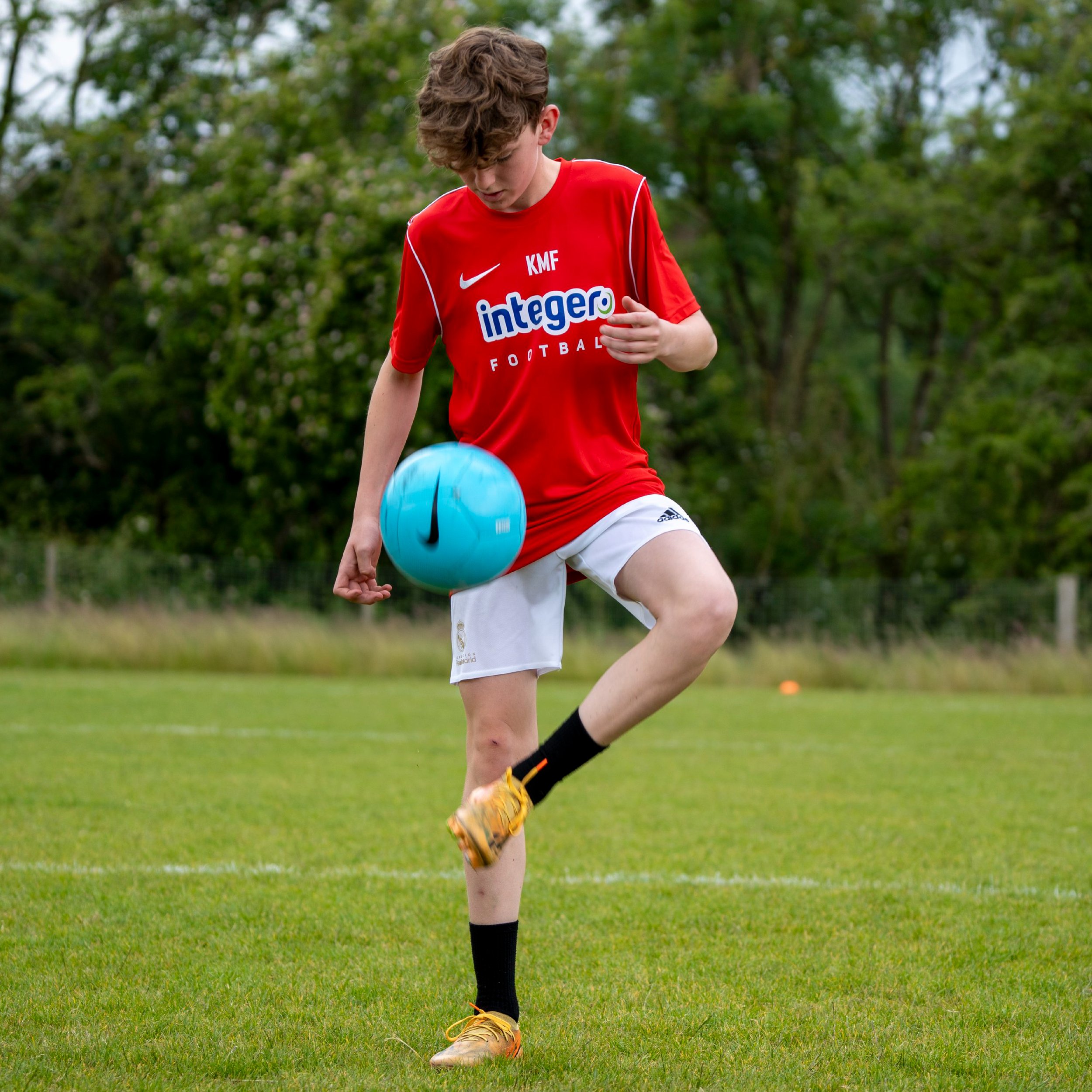
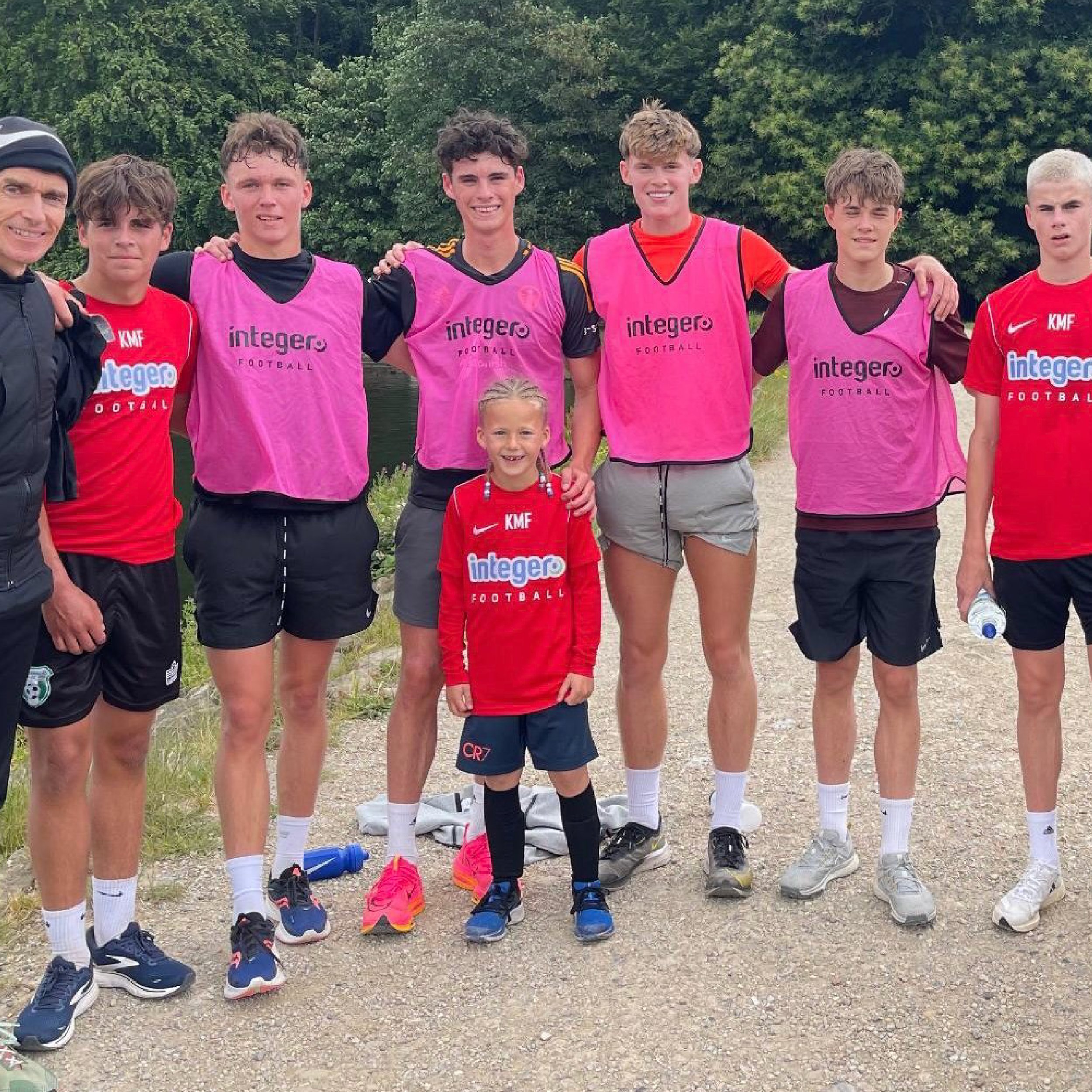
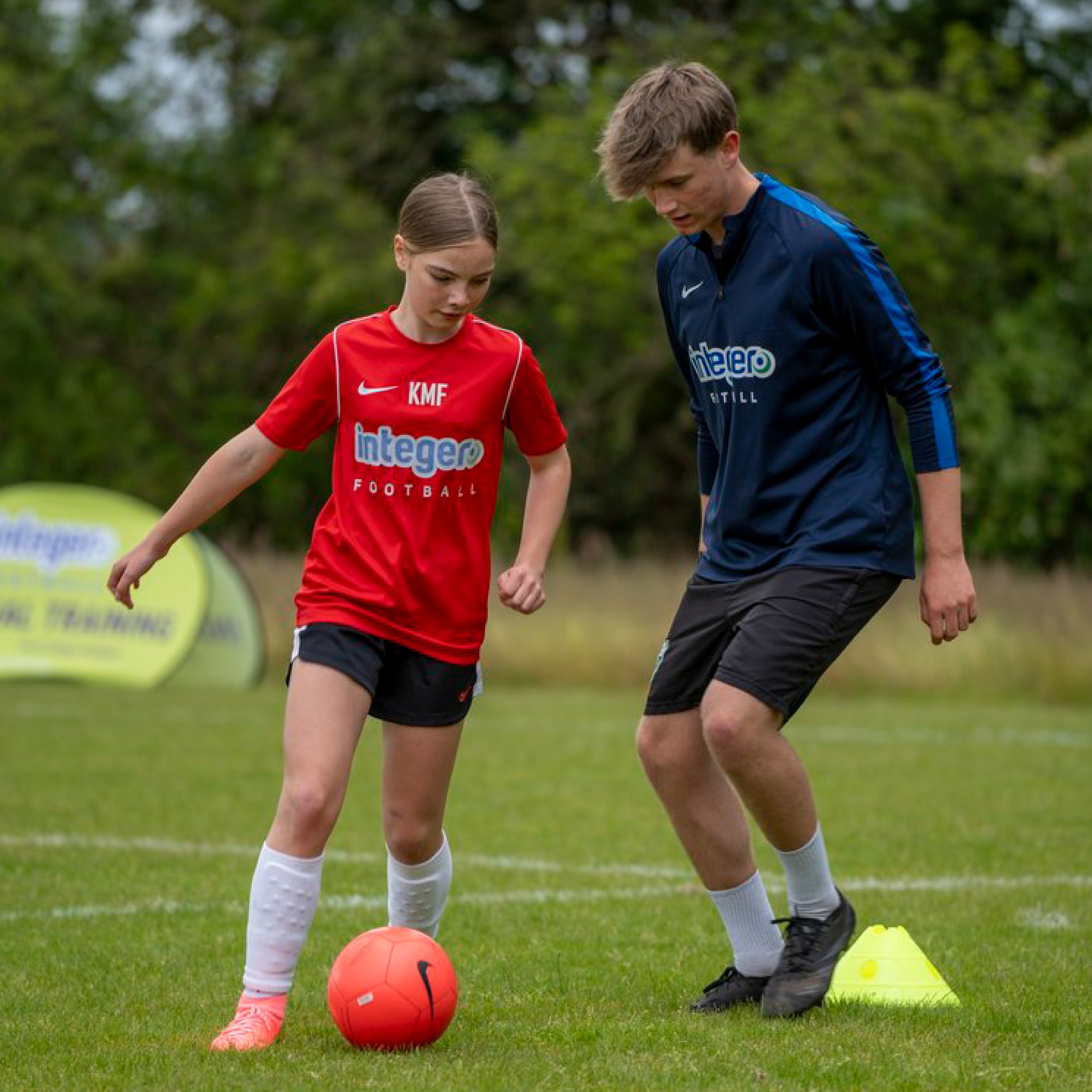


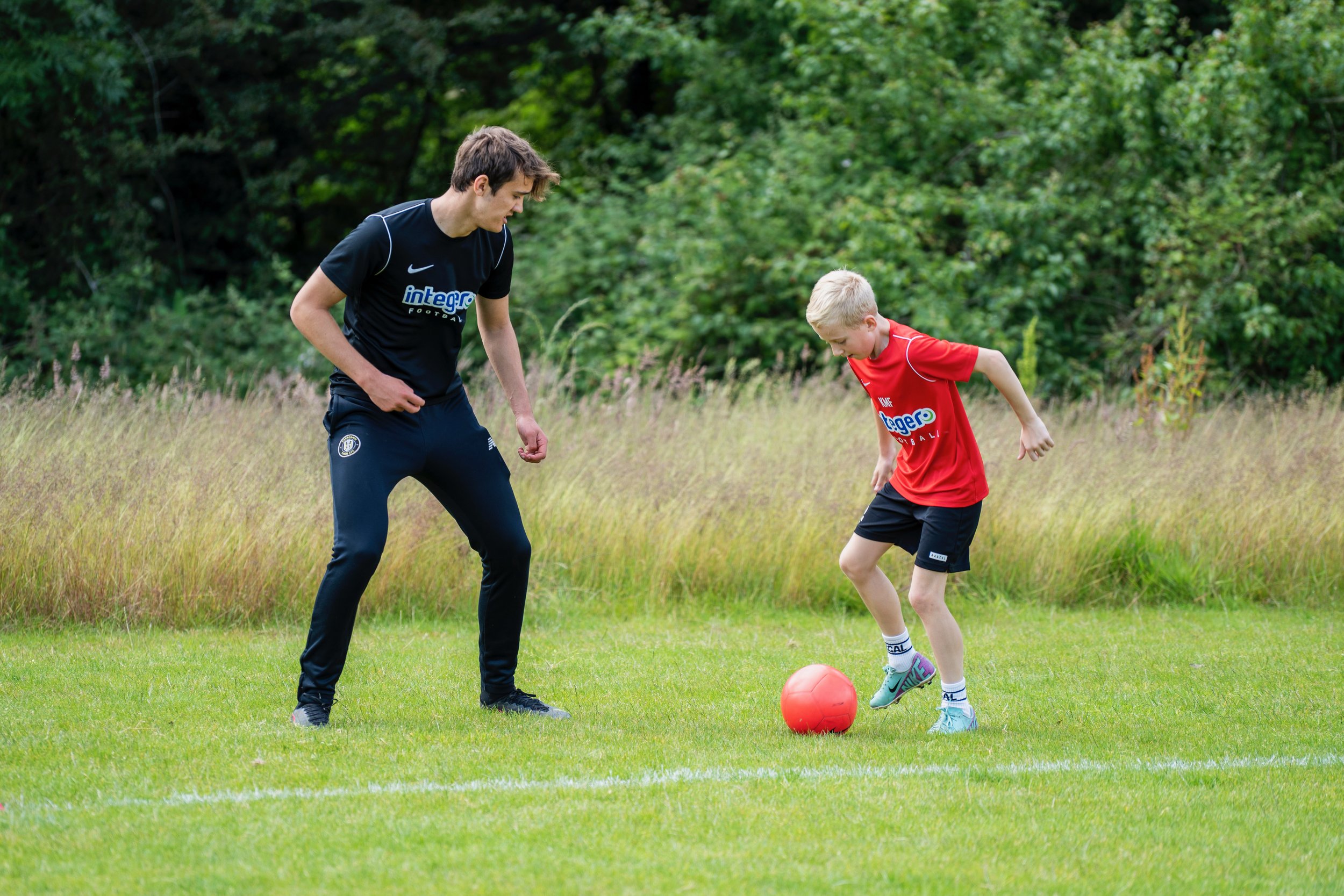

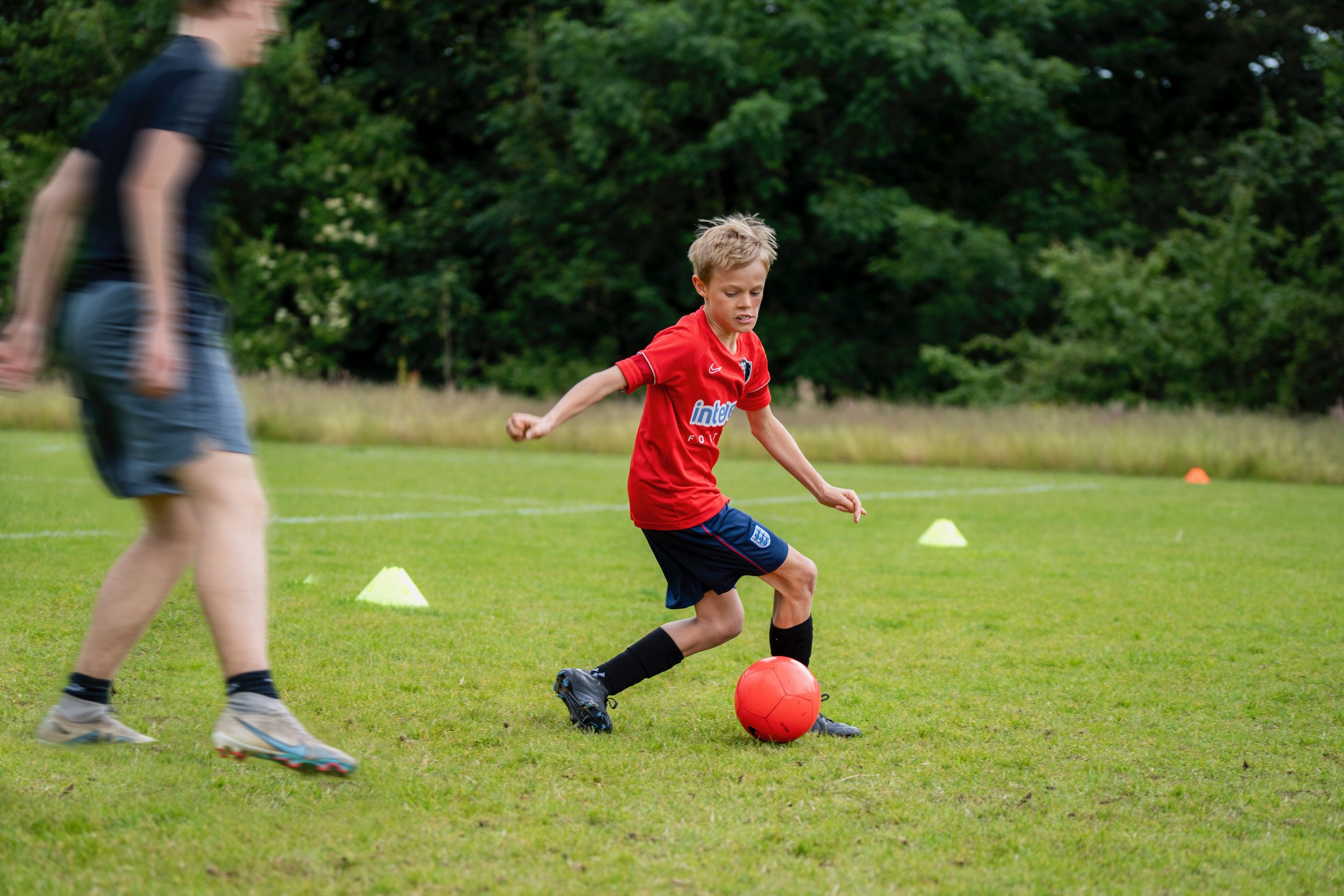



-
For your Integer Football 1-to-1 session, we ask that you wear weather appropriate kit, football boots/trainers suitable for your training surface, shin pads, a water bottle and a positive mindset!
By being prepared with the right kit, you'll maximise your focus and comfort during the session. -
Integer Football 1-to-1 sessions are suitable for ages of five to 21.
The nature of individual, 1-to-1 coaching allows us with work with the player in front of us, irrespective of age (or ability) and tailor the programme to their specific needs.
We see great development in players of all ages at Integer Football.
-
A 1-to-1 football session accelerates improvement by providing personalised training tailored to your strengths and weaknesses. The tailored pace, attention, focus and flexibility of the sessions ensure that you stay on track with clear goals, leading to faster development.
-
Even if you're not sure what to work on, our team at Integer Football can assess your game, create a development plan, and help you discover areas where you can improve, allowing you to progress effectively. We can do this as a team, together!
-
Integer Football 1-to-1 sessions are held in the Harrogate area on Tuesday, Wednesday and Thursday evenings, with a mix of indoor and outdoor training during the autumn and winter, and outdoor grass pitches in the spring and summer.
On Saturday mornings, sessions take place at Roundhay Park in Leeds. A special location that Simon has used for nearly 30 years, helping to develop players' technical, mental, and physical resilience.
Check out our locations page to find out more.
FREQUENTLY ASKED QUESTIONS.

READY TO JOIN THE ELITE?





















